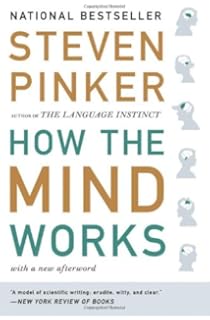A good book. Sometimes a bit too wordy. Sometimes a bit off topic. Nevertheless, very interesting. It's not just about the mind. It is about evolution, genes, neural networks, optics, and mathematics of music. It is about reverse-engineering us. Why we act the way we act. How our senses work.
To understand sight, we have to look to optics and computer vision systems. To understand movement, we have to look to robotics. To understand sexual and familial feeling, we have to look to Mendelian genetics. To understand cooperation and conflict, we have to look to the mathematics of games and to economic modeling.
Reverse engineering is the key to understanding how we work. Take morning sickness for example. Why is it part of pregnancy? A biologist, Margie Profet assumed that if it is there, it must be beneficial in some way, and she found it:
- Pregnancy sickness protects the developing baby from toxins: plant toxins in quantities that adults tolerate can cause birth defects
- Pregnancy sickness starts when the embryo is most vulnerable to teratogens (birth defect inducing chemicals)
- Pregnancy sickness ends when the embryo is past the critical stage of organ development and needs nutrients for further growth
- Women with more severe pregnancy sickness are less likely to miscarry
Confucius said "A common man marvels at uncommon things; a wise man marvels at the commonplace."
Steve Pinker is looking at commonplace human acts and wonders how they work, how could a robot do them.
Two related, interesting texts:
DNA seen through the eyes of a coder
The math equation for universal AI
The latter one is especially important. It may be describing how our intelligence works.
The latter one is especially important. It may be describing how our intelligence works.
New observations allow AIXI to improve its world model, which over time gets better and better. This is the learning component. [...]
The goal of AIXI is to maximise its reward over its lifetime – that’s the planning part. [...]
[...] every interaction cycle consists of observation, learning, prediction, planning, decision, action and reward, followed by the next cycle.

No comments:
Post a Comment